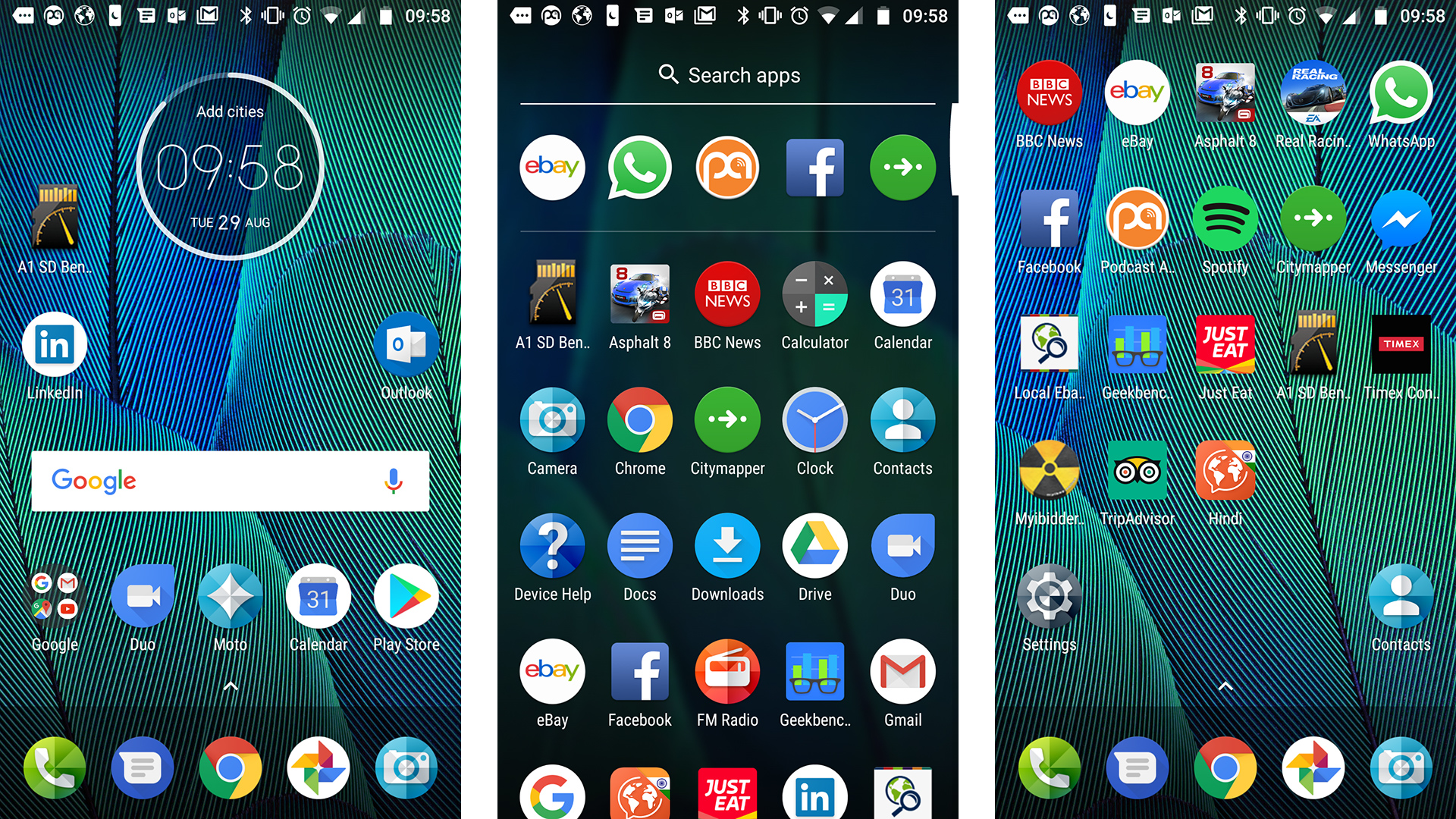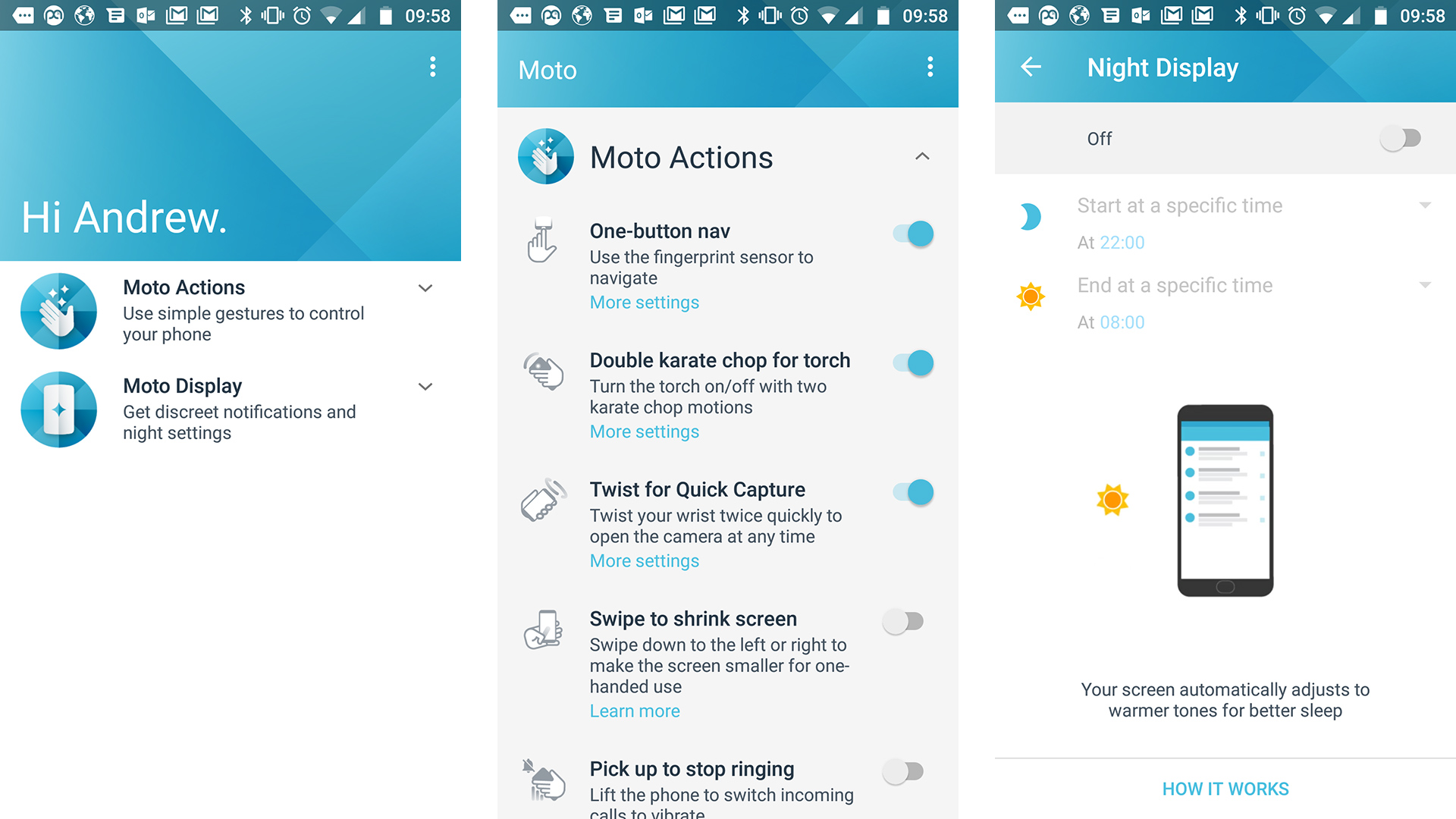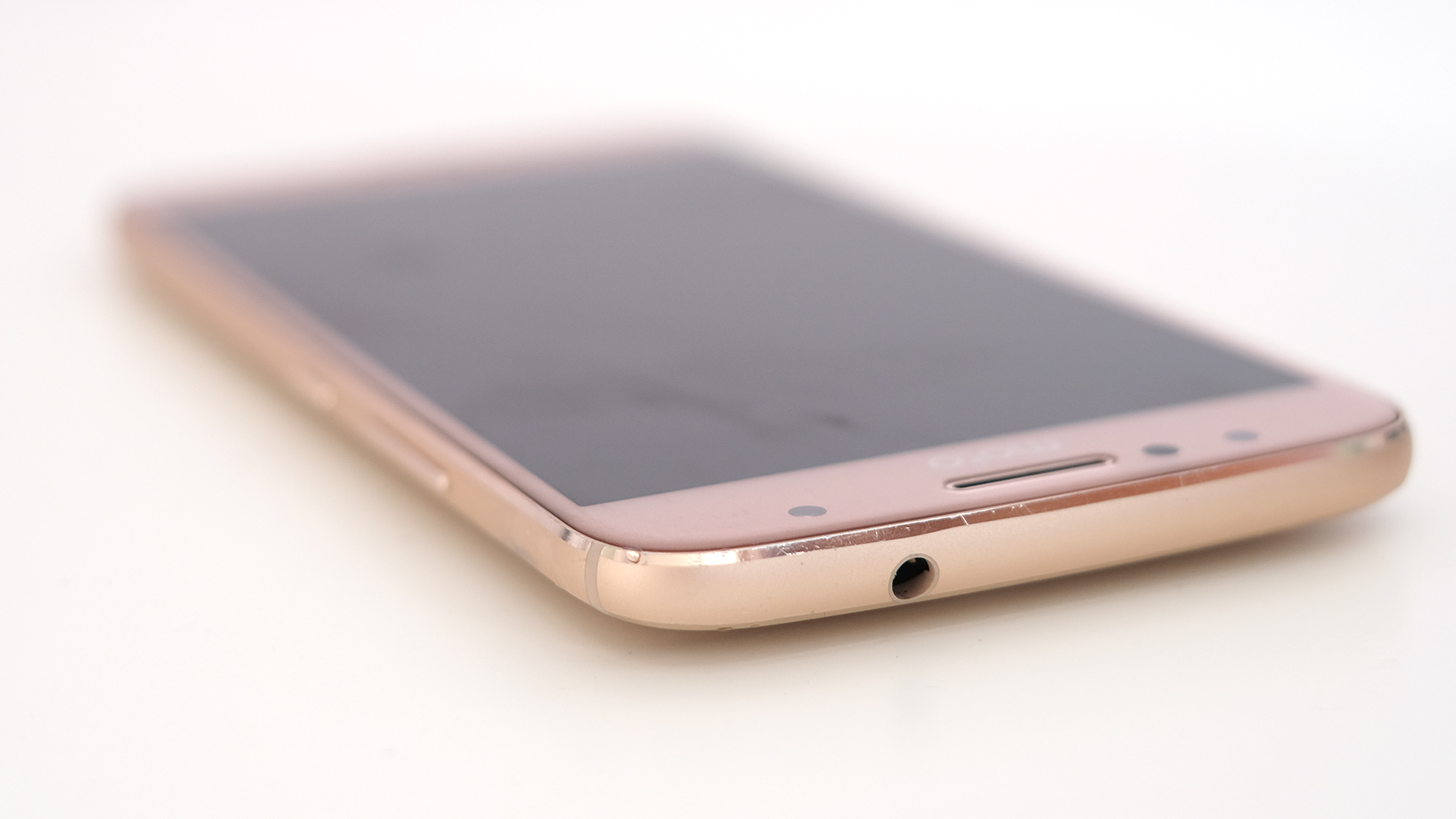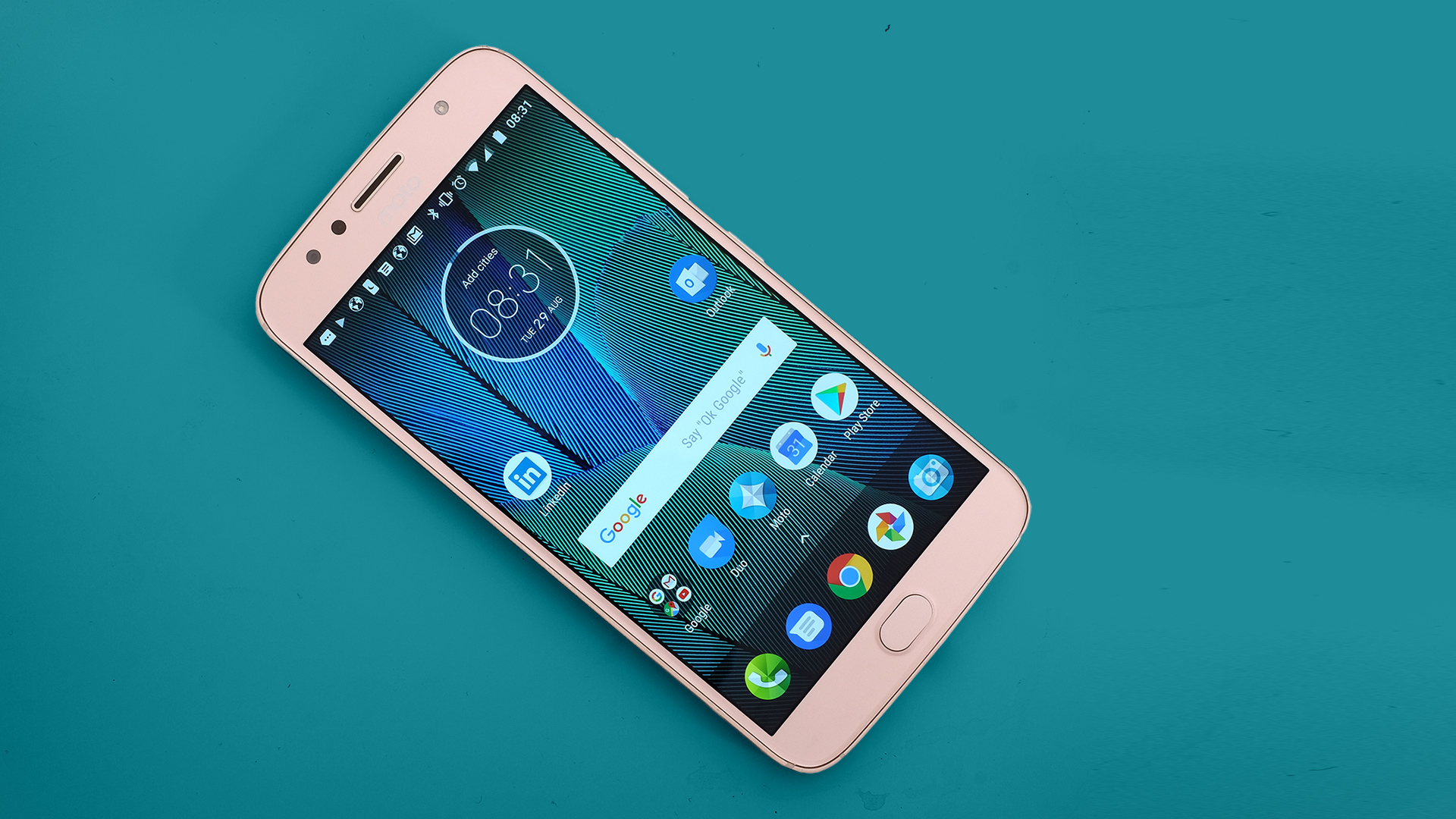Why you can trust TechRadar
Interface and reliability
- Android Nougat software
- Good performance bar the odd crash
Like other Moto phones, the Moto G5S Plus uses a virtually untouched version of Android rather than a custom interface. It currently runs Android 7.1, though an upgrade to Android 8 Oreo is planned - we're still waiting for the Oreo software to arrive.
However, it uses the software style seen in Pixel phones rather than the long-standing default Android UI. The big difference, other than a slightly different look, is that you flick up on the screen to bring up the apps menu rather than just tapping an icon in the dock.
A row of your five most-used apps also stick at the top of the apps menu for convenience.
Lenovo’s Moto G5S Plus customizations are low-key. Moto Display flashes up notifications intermittently while the phone is in standby and there are added gestures.

As well as being able to use the fingerprint scanner to replace the soft keys, with swipes acting as ‘back’ and ‘recent apps’, you can karate chop the phone twice to turn the torch on or quickly twist the G5S Plus twice to quick-capture a photo.
There are also gestures for rejecting calls and silencing the phone. All of these can be turned on/off separately if you find yourself accidentally firing them off, although we’ve grown quite fond of the torch gesture. Anyone else keep losing things under the sofa?

The Moto G5S Plus feels fast, with only a slight loss of the immediacy with which apps load compared to a phone 2-3 times the price.
We did experience a few app crashes, of the Facebook and camera apps in particular. However, if this is the phone’s fault such bugs are likely to be ironed out fairly quickly.
Similarly, bringing the phone out of standby using the fingerprint scanner is slower than most, although it reacts quickly while the screen is on.
Android 8 Oreo is set to come to the Moto G5S Plus at some point in the future, but Lenovo has yet to reveal an exact date so you shouldn't expect to get the up to date software particularly quickly if you buy this phone.
Movies, music and gaming
- Large screen is perfect for media
- Solid speaker
- No extra media software
The Moto G5S Plus’s screen makes it one of the best budget candidates for gamers and mobile media fans. Lenovo has not added any apps for this, though, leaving Google’s apps suite to the task.
However, when you first boot-up the phone you’re given the option to install from a selection of popular apps, including favorites like Netflix.
Google’s Music and Movies apps are perfectly fine if you don’t know where to start. They let you play your own content as well as streaming from Google’s own library.
Movies come in the form of outright purchases or rentals, but the music side is a little closer to Spotify, letting you stream 40 million tracks for a $9.99/£9.99/AU$11.99 a month subscription. You can buy albums too.
For the old-schoolers out there, the Moto G5S Plus also has an FM radio. We can’t imagine many people will use it at this point, though.
Given this is a relatively low-cost phone, we’re very happy with the sound quality of the bottom-loaded mono speaker. It’s loud and has the extra shot of lower-frequency power needed in a tiny speaker to avoid sounding reedy and harsh.

We’re also relieved that Lenovo has kept the 3.5mm headphone jack, whose days in phones are numbered. According to some, anyway.
Gaming performance is great for a lower-cost phone, with only minor occasional frame rate hitches in high-end games like Asphalt 8. If you’re a gamer on a budget, the Moto G5S Plus should be near the top of your list.
True obsessives may also want to consider the Honor 9, another high-quality phone, although at £380 (around $485/AU$640) it’s not really in the same category.
Performance and benchmarks
- Mid-grade performance
- Snapdragon 625 with 3GB of RAM
Like its predecessor, the Moto G5S Plus has a Snapdragon 625 CPU. This is a mid-range chipset, and one of the best options for a lower-price 1080p phone.
It has eight Cortex-A53 cores, and is paired with 3GB of LPDDR3 RAM rather than the faster LPDDR4/LPDDR4X kind. This is typical for a more affordable phone.
In Geekbench 4 the Moto G5S Plus scores 4,312 points. This is, confusingly, much better than the 3,824 points the Moto G5 Plus scored, despite having the same core hardware. However, it’s within the normal bounds for phones with the Snapdragon 625 chip.
A Snapdragon 625 chipset is nothing to get too excited about at this point, but it’s the right pairing for this phone. And doesn’t struggle with games as some MediaTek chipsets at this level do.
Current page: What's it like to use?
Prev Page Introduction, key features and design Next Page Battery life and cameraAndrew is a freelance journalist and has been writing and editing for some of the UK's top tech and lifestyle publications including TrustedReviews, Stuff, T3, TechRadar, Lifehacker and others.

